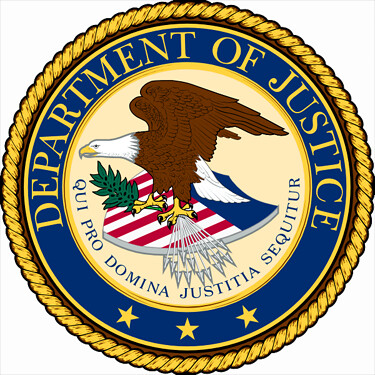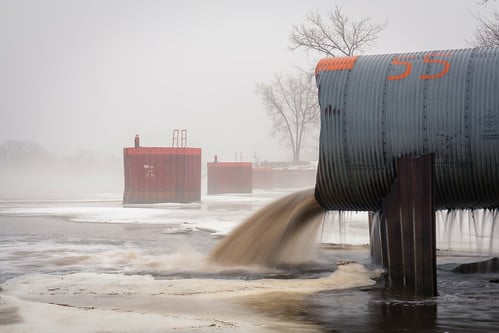The federal Council on Environmental Quality (CEQ) has proposed to revise its regulations administering the National Environmental Policy Act (NEPA) of 1969. NEPA requires federal agencies to assess the environmental effects of their proposed actions, and incorporate this information into their decisions. Government-wide guidance is provided by the White House’s CEQ, established by NEPA and appointed by the President. CEQ issues formal regulations that agencies must follow, and guidance documents that provide additional advice. CEQ also reviews agencies’ NEPA implementation programs, and publishes annual national Environmental Quality Reports.
Read MoreAudit, Compliance and Risk Blog
Trump Administration Proposes to “Modernize” Federal Environmental Impact Assessments by Narrowing Them
Posted by Jon Elliott on Tue, Feb 25, 2020
Tags: Business & Legal, Environmental risks, Environmental, EHS, EPA, clean water, site auditing, greenhouse
For nearly 30 years, environmental regulation has included examples of market-like mechanisms, where overall pollution limits (“budgets”) are set and individual sources assigned trade-able “emission credits” that can be traded among sources as they negotiate the most efficient pathways to overall reduction necessary to meet the budget. Although proliferating “cap and trade” systems for greenhouse gases are probably the most widely known, other examples abound.
Read MoreTags: Environmental risks, Environmental, EPA, clean water
EPA Proposes to Revise Rule Governing Lead in Drinking Water
Posted by Jon Elliott on Tue, Dec 10, 2019
Since 1991, Safe Drinking Water Act’s (SDWA) Lead and Copper Rule (LCR) has required public water systems (PWSs) to take steps to protect their customers from hazardous levels of lead in drinking water. Even before the highly-publicized crisis in Flint, Michigan, the Environmental Protection Agency (EPA) was working to update and expand LCR’s protective measures. These efforts include a 2016 White Paper announcing the “urgent need” for revisions, describing key issues and possible revisions, and projecting a proposal to issue extensive LCR revisions during 2017. However, after President Trump assumed office, EPA’s priorities shifted and the agency delayed action (I summarized the existing LCR and wrote about EPA’s regulatory delay here). In November 2019, EPA proposed LCR changes, which I summarize below.
Read MoreTags: Environmental risks, Environmental, EPA, clean water
Department of Justice Reemphasizes its Disfavor for Supplemental Environmental Project Agreements with State and Local Governments
Posted by Jon Elliott on Tue, Oct 15, 2019
Since President Trump took office, the US Department of Justice (DOJ) has taken repeated steps to restrict federal attorneys from negotiating settlements in which defendants agree to conduct “supplemental environmental projects (SEPs)” in exchange for reduced formal penalties for the noncompliance that led to the agency investigation and enforcement. Proponents see SEPs as a way to promote environmental and health values by encouraging defendants to undertake projects that wouldn’t occur otherwise in order to reduce or eliminate civil and/or criminal liability. Opponents see them as rogue efforts in which prosecutors substitute their own judgment for the statutory and regulatory directives that are supposed to guide their actions.
Read MoreTags: Business & Legal, Environmental risks, Environmental, EHS, EPA, clean water
EPA Decides Not to Require SPCCs to Address Hazardous Substance Spills
Posted by Jon Elliott on Tue, Sep 24, 2019
The Clean Water Act (CWA) requires the Environmental Protection Agency (EPA) to define “oil” and “hazardous substances”, and includes requirements that EPA establish “procedures, methods, and equipment and other requirements for equipment to prevent discharges of oil and hazardous substances from vessels and from onshore facilities and offshore facilities, and to contain such discharges….” (33 USC § 1321(j)(1)(C)) Since 1973, EPA has required owners and operators of non-transportation-related onshore and offshore facilities to establish and implement Spill Prevention, Countermeasure and Control (SPCC) Plans if they manage more than threshold levels of oils (I summarized these requirements here).
Read MoreTags: Environmental risks, Environmental, EHS, EPA, Hazcom, effluent, Stormwater, clean water, spcc
Status of Trump Administration Environmental Regulatory Rollbacks
Posted by Jon Elliott on Tue, Jul 02, 2019
Since President Trump took office, I’ve written in this space a number of times describing specific executive and regulatory initiatives to freeze or reverse environmental regulations. They’ve largely conformed with the President’s antipathy for such regulations, and his appointees’ vigor. Environmental and health advocates have challenged all these changes, continuing to yield court decisions confirming the limits of executive and administrative authority to impose changes (In January 2017 I summarized the limits on various approaches here).
Read MoreTags: Health & Safety, Environmental risks, Environmental, EPA, Oil & Gas, clean water
Another Round of EPA and Corps of Engineers Proposals to Redefine “Waters of the United States”
Posted by Jon Elliott on Tue, Feb 26, 2019
On December 11, 2018 the Environmental Protection Agency (EPA) and the U.S. Army Corps of Engineers (Corps) jointly proposed to revise their regulatory definitions of “waters of the United States”, applying authority under the Clean Water Act (CWA). CWA does not define this term clearly, so after decades of rulemakings and litigation, it remains in dispute. Generally, Democratic presidents and the judges they appoint tend to support geographically and semantically broad applications, while with Republican presidents and the judges they appoint tend to take narrower views. The latest proposal would narrow the definition, reversing Obama-era rules adopted in June 2015, and presently in effect in 22 states based on the present status of ongoing judicial appeals (I summarized the 2015 rules, and the litigation leading up to them here and the Trump-era EPA’s 2017 proposal to roll back the 2015 revisions here). The agencies characterize this narrowing as an increase in certainty for stakeholders, accomplished by eliminating some of the site-specific discretion that the 2015 rules provided to permit writers. Because of the government shutdown, this latest proposal was not published in the Federal Register until February 14, 2019.
Read MoreTags: Environmental risks, Environmental, EPA, effluent, clean water
Court Reinstates Delayed Accidental Release Prevention Revisions, While EPA Moves To Rescind Them
Posted by Jon Elliott on Tue, Oct 09, 2018
What’s the Current Status of ARP Requirements?
ARP rules specify “regulated substances” and threshold quantities for which onsite incidents could produce harmful offsite consequences, “risk management plan (RMP)” requirements to be instituted by facilities in order to manage those risks, and associated procedural and reporting requirements. In the last week before President Obama left office, EPA completed a multi-year review of its ARP program, responding to his Executive Order Number 13650 from 2013 (I wrote about these revisions here). Then, when President Trump took office, EPA reversed course, repeatedly deferring the effective date of those revisions while the agency reviewed them. In June 2017 EPA issued the latest of these deferrals, citing pending petitions for review by industry groups, and the agency’s need to reconsider the matter to justify deferring the effective date of the (Obama era) revisions for 20 months.In May 2018 EPA completed its review, and published a proposal in the Federal Register to rescind almost all these expansions and return ARP requirement to those in place before 2017 (I summarized the proposal here). EPA also included an alternative proposal that retained a few more elements, and requested public comment on both versions no later than July 30, 2018.
What Has the DC Circuit Just Decided?
The DC Circuit case was brought by environmental and health groups, supported by a number of state governments. They claimed that EPA’s 20 month deferral exceeded the three month limit provided the agency by the CAA. They also noted that the agency had offered no substantial justification for overturning a final decision (the January 2017 revisions) after a multi-year rulemaking.The case was heard by a 3 judge panel of the DC Circuit (interestingly, the panel include Judge Brett Kavanaugh, whose nomination to the US Supreme Court is pending and who took no part in this decision). The remaining judges agreed with the plaintiff’s arguments, found EPA’s delay to be “arbitrary and capricious”, and vacated the deferral rule.
Now What?
With the deferrals gone, the 2017 revisions take effect as issued in the waning days of the Obama administration. After the first two Trump Administration deferrals, the revisions would have been effective in June 2017 with staggered compliance deadlines. Facilities were to ensure coordination of their onsite activities with offsite response agencies by March 2018, institute enhanced RMP activities by March 2021, and formally revise their RMPs by March 2022. On September 21, the Court issued another order directing EPA to begin enforcing the 2017 rules immediately. This means that the coordination requirements identified above are active, and other elements remain on their original phase-in schedule..But EPA’s May 2018 proposal to rescind most of the January 2017 amendments was not part of this case, and so is unaffected. As of this writing EPA has not made any statement about further appeal of the August 2018 court decision, but it’s safe to assume that the agency is proceeding with its own May 2018 proposal – presumably paying attention to the procedural flaws highlighted in the court order. I expect EPA will eventually issue some version of its proposed regulatory roll-back, which will trigger further litigation about whether the dramatic change is justified by the rulemaking record.
Self-Assessment Checklist
Does the organization own or operate any facility with any “stationary source” subject to ARP requirements?
-
If so, has the organization considered the impacts on its operations and compliance position under potential revisions?
Where Can I Go For More Information?
Read MoreTags: Environmental risks, Environmental, EPA, clean water
On April 19, 2018, EPA released their Environmental Justice FY2017 Progress Report. The report commemorates the 25th anniversary of the Office of Environmental Justice (EJ), highlighting progress advancing EJ in minority, low-income, tribal, and indigenous communities. Among their 2017 successes, EPA documented for the first time measurable environmental outcomes in three program areas: fine particulate air pollution (PM2.5), small drinking water systems, and tribal drinking water systems. In each area, EPA measured significant improvements:
Read MoreTags: Environmental risks, Environmental, EPA, clean water, site auditing
A Beaver’s Tale: Lessons Learned at Cuyahoga Valley National Park
Posted by Rebecca Luman on Tue, Jun 05, 2018
Growing up, my mother was instrumental in our family of eight taking camping trips each summer. By the time I was in 4th grade, I had been in 42 states, Canada and Mexico, and had never been on a plane. We explored, hiked, and camped in state parks, national parks, and forests, traversing the country, with a pop-up camper and a paper road map to navigate our journeys.
Read MoreTags: Health & Safety, Environmental risks, Environmental, clean water, site auditing










